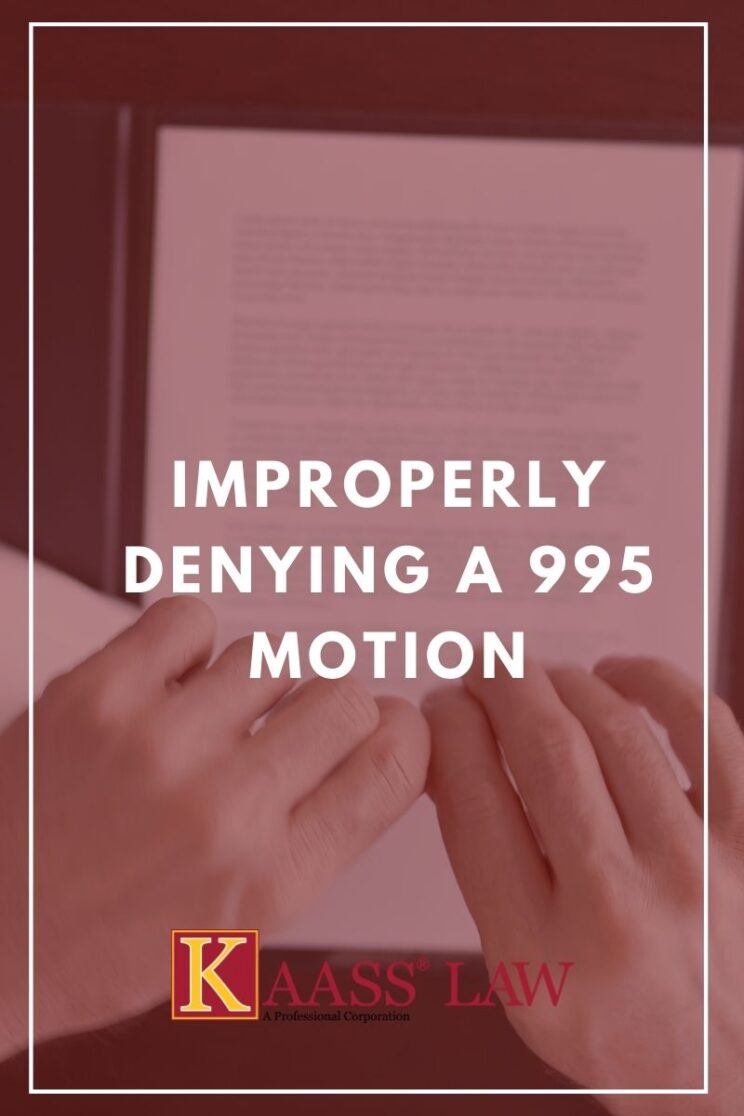What is a 995 Motion?
A 995 motion is another name for a Motion to Set Aside Information. This is a motion that the defendant in a criminal matter may make. In other words, this motion asks the judge to dismiss all or part of the criminal charges that are pending before an individual in a criminal matter. The argument here is that the judge in the preliminary hearing ruled incorrectly finding that there was enough evidence for the matter to go to trial. A motion to set aside information is governed by Penal Code 995.
What Are Your Options if a 995 Motion Was Improperly Denied?
If a 995 motion is improperly denied, the following options can be taken by the defendant:
- File a petition for a writ of prohibition in the court of appeals;
- File a petition for a writ of habeas corpus in the trial court, appellate court, or California Supreme Court; or
- Continuing the plea bargain.
It is important to note that an improperly denied 995 motion cannot be directly appealed.
How Does a Petition for Writ of Prohibition Work?
A petition for writ of prohibition is governed by Penal Code 999a, which states that the defendant has 15 days after their 995 motion was denied to file a petition if their 995 motion was made because the defendant had been indicted without reasonable or probable cause or that the defendant had been committed on information without reasonable or probable cause. A copy also needs to be served to the District Attorney.
What is an Arraignment?
An arraignment is part of a criminal matter where the defendant enters a plea, whether guilty or not guilty or no contest.
How Does a Petition for Writ of Habeas Corpus Work?
A writ of habeas corpus petition works similarly to the way a petition for writ of prohibition does. However here, Penal Code 1508 states, the Supreme Court or Court of Appeals can return the matter before the issuing judge/court or to the court below it. Thus, if the trial court denies the petition, the defendant can then file a new petition in the court of appeal. However, if the court of appeal denies the petition, the defendant can then can have the Supreme Court review the petition by filing a petition for review. The defendant may also file another petition that would invoke California Supreme Court’s habeas jurisdiction.
How Does Continue a Plea Bargain in a Criminal Case Work?
Plea bargaining allows the defendant to negotiate and use leverage. In other words, the defendant can further poke holes in the prosecuting agency’s legal theory and further highlight how the issues found at the preliminary hearing may become an issue for the jury to return a guilty verdict.
Los Angeles Criminal Defense Attorney
If you or someone you know has been denied of their 995 motion, we invite you to contact our Los Angeles Criminal Defense Attorney at (310) 943-1171 for a free consultation.

